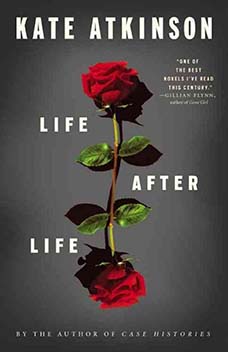Kate Atkinson’s “Life After Life” follows Ursula Todd through her many lives in her latest novel.
The novel follows Ursula after each death, seeing what she becomes and how she eventually dies again. Ursula is murdered, killed by the flu, is a victim of the bombing of Germany in World War II, and commits suicide.
This might sound like the most depressing book ever written, eventually the scenarios don’t contain the emotional punch that they did in the beginning. The reader realizes that the next chapter will have the main character “alive” again.

Fans of history may enjoy this novel, due to the heavy historical context in various “lives” Ursula leads. She kills Hitler, encounters American soldiers, wars are started and wars are ended.Inevitably the reader reaches a scene where a young Ursula is taken to a psychiatrist by her parents, fearing the references to reincarnation.
What this book manages to accomplish besides entertainment is a respect for the writer.
Atkinson shows just how vivid her imagination is by playing the same starting scenario several times, only to have the reader discover that this time the ending is different. By creating thousands of time lines, Atkinson reveals the hundreds of different ways one life can turn and become another, a literary butterfly effect.
Each time Ursula experiences a life, depending on how long she survives, she seems to get a little closer to figuring out what the “right” life is for her. Each time, she tries to avoid the incident that caused her death in the last reality. This pattern is found from the time she dies as a newborn to the time she dies as an adult.
The only things that don’t seem to change are some of her family members. Her mother, father, sister, brother, and aunt seem to carry the same (or remarkably similar) personalities through each life.
By no means is this a funny or romantic book. Atkinson displays sheer talent in character manipulation in all five hundred pages of “Life After Life”.
The odd (in American eyes) British sense of humor that undercuts some of the tension is still a relief, even if it just helps as a distraction from suffering and knowing that inevitably the next page will contain either the death or rebirth of the character to whom the reader becomes attached.